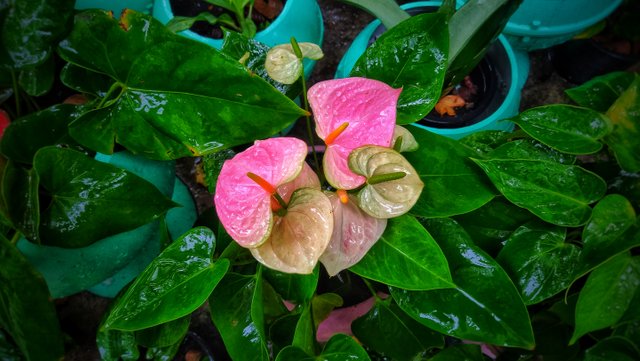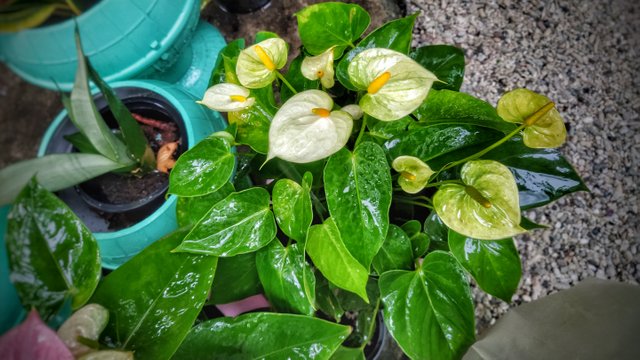Photography: Painter’s-palette


On a rainy day in the last week of May, I was assigned to visiting various residences for some specialized tasks. Rain has always been one of my favorite things since I was a kid. Staying at home, listening to the rain, and engaging in indoor hobbies such as writing a blog or article are fantastic. Outdoor activities, on the other hand, are rather inconvenient.
So, when I went to one of the residences that day, I discovered that they have a lot of indoor and outdoor ornamental plants. I was awestruck by all of the lovely plants and my first meeting with Painter's-palette. I had seen this plant online and knew it was widely used in bouquets, but seeing it in person was a different experience for me as a nature lover.
The plant's beauty mesmerized me. Raindrops, in particular, accentuated the beauty of the plant. So let’s have a look at the detail of this plant.

Anthurium andraeanum is a flowering plant native to Columbia and Ecuador that is used for decorative purposes. Flamingo flower, tailflower, painter's palette, and laceleaf are some of the other names for this plant. It has heart-shaped leaves and a spadix, which is a projecting inflorescence that holds several small flowers. It comes in a variety of colors, depending on the Anthurium variety or hybrid.
To survive, it needs moist soil and a humid atmosphere. This plant is poisonous. Contact with human body might cause irritation of skin and can harm gastrointestinal system if ingested.
This plant is beneficial to the environment because it eliminates toxins from the air, as NASA's clean air study has shown.
That concludes today's discussion. Hope you guys like it. Thank you.